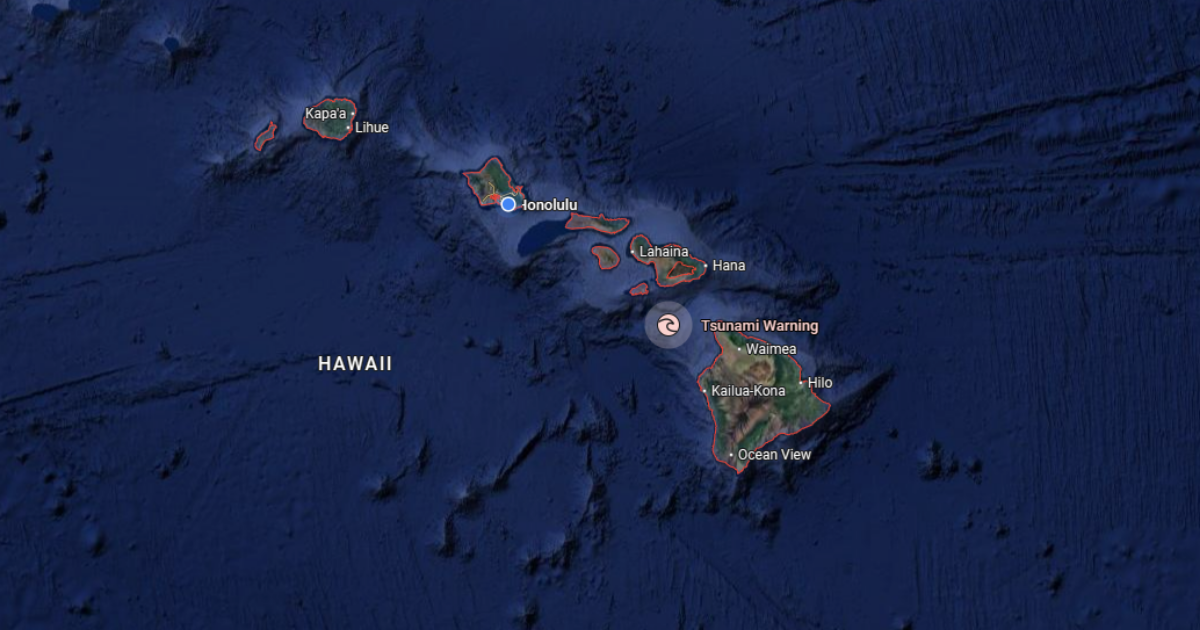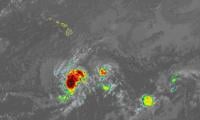HONOLULU (Island News) – The Tsunami Warning for Hawaii was downgraded to an advisory level following an earthquake hit Kamchatka, Russia on Tuesday afternoon.
According to the National Weather Service, an 8.7 magnitude earthquake occurred off the east coast of Russia at approximately 1:25 p.m. on July 29, 2025.
As of 10 p.m., Dr. Chip McCreery, a tsunami expert with the National Oceanic and Atmospheric Administration, said Hawaii is past the worst of the tsunami. Emergency officials are waiting to bring down the warning.
At around 10:40 p.m., the warning was downgraded to an advisory by emergency officials.
Officials reported that a tsunami has been generated that could cause damage along coastlines of all islands in the state of Hawaii. Urgent action should be taken to protect lives and property, NWS said.
A Tsunami Warning was issued for Hawaii after an 8.7 magnitude earthquake was reported on Kamchatka, Russia on Tuesday afternoon. The initial Tsunami Watch that was initially in effect has been upgraded. If tsunami waves impact Hawaii, the estimated earliest arrival of the first tsunami wave is estimated to be 7:17 p.m. according to NWS.
If tsunami waves impact Hawaii, the estimated earliest arrival of the first tsunami wave is 7:10 p.m. of Hanalei, Kauai, but 7:17 for the rest of Hawaii on Tuesday, NWS reports.
If you’re on a coastal road stuck in gridlock, go by foot or at least 100 feet above sea level or 2 miles inland, you can also evacuate vertically to the 4th floor or higher of a tall building.
According to City and County of Honolulu Mayor Rick Blangiardi, tsunami sirens will sound at 4:10 p.m., 5:10 p.m. and 6:10 p.m.
Governor Josh Green has signed an emergency proclamation. Another update is expected from emergency officials by 11 p.m., according to Gov. Green at a press conference on Tuesday night.
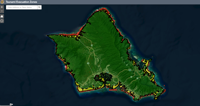
courtesy CCHNL
Evacuation Information & Available Evacuation Shelters
The public is urged to get out of the evacuation as soon as possible; anywhere outside of the evacuation zone is considered a safe place. If possible, make plans to evacuate to a family member or friend’s home who lives outside the evacuation zone.
Click here to view the evacuation zone via the Oahu Department of Emergency Management.
The public is urged to get out of the evacuation as soon as possible; anywhere outside of the evacuation zone is considered a safe place. If possible, make plans to evacuate to a family member or friend’s home who lives outside the evacuation zone.
Click here to see the evacuation zones per county.
Officials say that if you’re in an evacuation zone, take your Go Bag and evacuate outside of the RED tsunami zone or evacuate vertically to at least the 4th floor of any building at least 10 stories tall.
Click here to view tsunami refuge areas.

The County of Hawaii has directed the evacuation for all tsunami inundation zones as a result of the Tsunami Warning. Emergency shelters will be opened at the following locations on Hawaii Island:
- Puueo Community Center
- Panaewa Park
- Keaau Armory
- Pahoa Neighborhood Facility
- Kau District Gym
- Naalehu Community Center
- Yano Hall
- Kealakehe High School Gym
- Waimea Community Center
- Hisaoka Gym
- Honokaa Gym
Kauai County has opened the following refuge areas for those evacuating:
- Kapa’a High School
- Kapa’a Middle School
- Ele’ele Elementary School
- Koloa Library
- Kauai Community College
- Kalaheo Neighborhood Center
- Kilauea Elementary School
Maui County has multiple shelters around the island where the public can find refuge. Kihei Community Center and Velma McWayne Santos Center should’ve opened at 5:15 p.m. Visitors should follow their hotel or lodging plans for tsunami evacuation protocol.
Evacuation areas on Maui include the following:
- Molokai High School
- Kihei Community Center
- Velma McWayne Santos Center
- Lahainaluna High School
- Hana High School
- Hannibal Tavares Pukalani Community Center
Those who are bringing pets are asked to also bring a kennel, food and water for the animal.
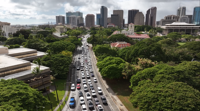
Traffic in town amidst evacuations on Tuesday afternoon, July 29, 2025.
Photo by Hugh Gentry
Traffic Advisories
OAHU:
The following Waianae Coast Emergency Access Routes will be open to assist with traffic congestion-
- Helelua Bypass – between Helelua St. and Lualualei Naval Road
- Paakea Road Extension Bypass – between Hakimo Road and Laulaulei Naval Road
- Pakeke St. Bypass – between Kaihoohulu St. and Hakimo Road
KAUAI:
As of 7 p.m., the following bridges were closed to all traffic:
- Kaumualii Highway at Fort Elizabeth (Russian Fort)
- Kaumualii Highway west of Lele Road junction
- Kaumualii Highway and Waialo Road junction
- Traffic Round-About (Po‘ipu Road)
- Ala Kinoiki Road and Weliweli Road junction
- Nawiliwili Road and Lala Road junction
- Rice Street and Mokoi Street junction
- Kuhio Highway and Kapule Highway junction
- Kuhio Highway and Kamole Road junction
- Kuhio Highway and Hanalei Plantation Road
As of 3:50 p.m., the Kauai Police Department shut down traffic going westbound across Hanalei Bridge. Eastbound traffic is open for evacuation. Officials advise the public to stay off the road if at all possible.
According to HDOT, the public is asked to avoid Hanalei to allow people to evacuate and Wailua Bridge will not be closed.
MAUI:
According to officials, Maui Veterans Highway is congested and the public is urged to use Cane Haul Road toward Hansen and Pulehu Road to get to Kula. The road above Makena Golf Course will also provide access to Ulupalakua. Oprah’s road is also open to get Upcountry, according to Maui Police Department.

Courtesy: Olivia Anne Snyder via Unsplash
TRAVEL IMPACTS
ALL ISLANDS:
According to Flight Aware, multiple flights have been delayed or cancelled. Some of the places include interisland travel, going from Honolulu to Molokai, Lanai, Lihue and Hilo. For more details, visit this live airport status sheet.
Coast Guard Captain of the Port has ordered all vessels to follow their procedures to leave port.
OAHU:
Baggage claim was temporarily suspended at the Daniel K. Inouye International Airport during the first wave of arrivals but has since resumed. Flights will restart with with interisland flights and staggered transpacific flights.
BIG ISLAND:
Hilo Airport commercial operations have been suspended as of 4:17 p.m. to facilitate evacuations from Keaukaha. The airport have begun procedures to reopen the runway for Wednesday flights.
MAUI:
Kahului Airport operations will be suspended prior to first wave arrival, HDOT said. Passengers are sheltering in the terminal and in the morning, those passengers will be rescreened prior to departures.
—
Mayor Blangiardi announced that all state workers can go home for the day.
“A Tsunami is a series of long ocean eaves. Each individual wave crest can last 5 to 15 minutes or more and extensively flood coastal areas. The danger can continue for many hours after the initial wave as subsequent waves arrive. Tsunami wave heights cannot be predicted and the first wave may not be the largest,” reported NWS.
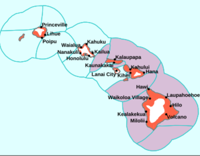
Courtesy NWS
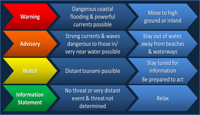
Courtesy NWS
What are the differences between a Tsunami Info Statement, Watch, Advisory and Warning?
A Tsunami Information Statement means an earthquake has occurred but there is no threat or it was very far away and the threat has not been determined. In most cases, there is no threat of a destructive tsunami.
A Tsunami Watch means that an earthquake occurred, but it’s unknown at this time if a tsunami has been generated. A Tsunami Watch is when the public should be prepared to act because a tsunami may later impact the watch area. During this alert is when authorities are still collecting more information.
A Tsunami Advisory means that a tsunami with the potential to generate strong currents or waves to those in or near the water is imminent, expected or occurring. During this alert is when the public should stay out of the water, away from beaches and waterways.
A Tsunami Warning is a tsunami with potential to generate widespread inundation is imminent, expected or occurring. During this alert is when the public should move to high ground or inland.
For more information on how to better understand the different Tsunami Alerts, click here.
This story will be updated once more information becomes available.
A tsunami has hit coastal areas of Russia’s Kuril Islands and Japan’s large northern island of Hokkaido after a powerful, 8.8-magnitude earthquake off the coast of Russia early Wednesday. Tsunami warning sirens also blared in Honolulu as residents were urged to higher ground. The first tsunami wave hit the coastal area of Severo-Kurilsk, the main settlement on Russia’s Kuril Islands in the Pacific, according to the local governor Valery Limarenko. The Pacific Tsunami Warning Center said waves of 1 to 3 meters above tide level were possible along some coastal areas of Hawaii, Chile, Japan and the Solomon Islands. Waves of more than 3 meters were possible along some coastal areas of Russia and Ecuador.
Hurricane Iona continues to gain strength well south of Hawaii. It poses no immediate threat, but forecasters are monitoring closely.
*AI assisted with the formatting of this story. Click here to see how KITV Island News uses AI
